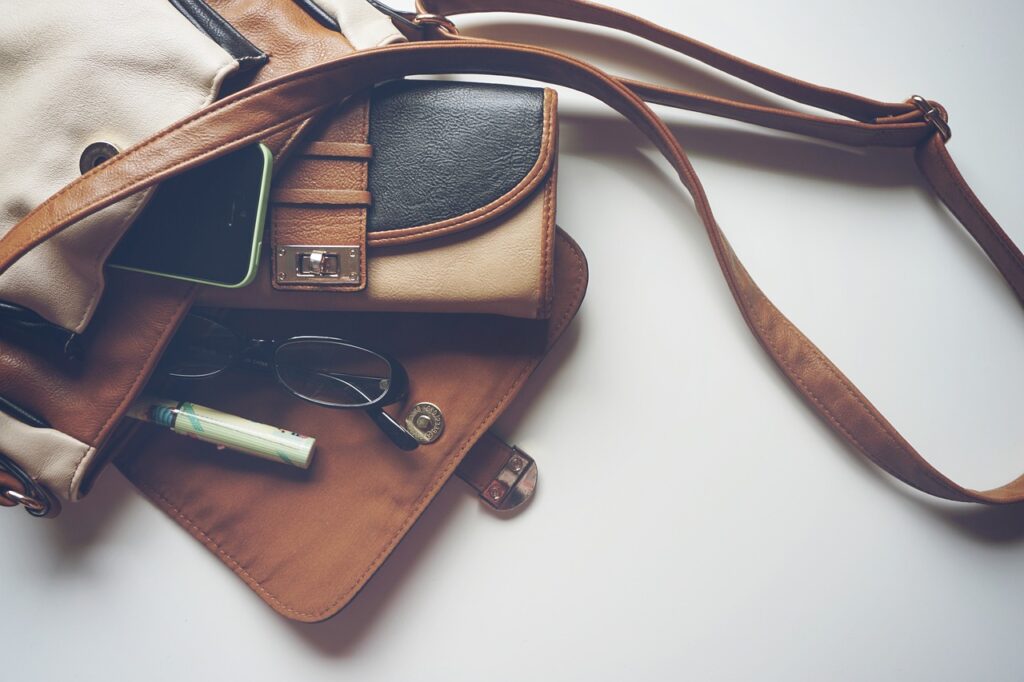
Long before smartphones replaced wallets and keys with apps, handbags emerged as more than mere carriers of belongings; they became cultural icons reflecting the style and sensibilities of their eras, making them fascinating artifacts of social change, technological advancements, and evolving cultural norms.
Renowned for their spirit of freedom and rebellion, the 1920s, known as the Flapper Era, showcased small and ornate handbags called ‘pochettes,’ adorned with beads and embroidery that complemented the daring flapper dresses of the time, capturing the vibrant and carefree essence of the Roaring Twenties.
As the Great Depression took hold in the 1930s, practicality and durability became paramount, leading to handbags crafted from resilient materials paired with more utilitarian designs, mirroring the decade’s economic hardships and fostering a preference for leather due to its strength over other materials.
The 1940s, shaped by World War II, emphasized functionality; with leather scarce, alternatives like canvas and rayon came to the forefront, marking the introduction of the iconic ‘Kelly bag’ by Hermès, a perfect blend of timeless elegance and practicality.
The 1950s ushered in a return to glamour post-war, with handbags becoming more structured and sophisticated, some featuring striking metal frames, transforming these accessories into powerful statements of optimism and economic recovery during this vibrant decade.
Modernity was the mood of the 1960s. Bold Pattern came to life on the handbag and plastic became a material of choice. In businesses such as Paco Rabanne, designers took the lead with innovative designs, turning out bags that were truly pieces of art as much as pieces of fashion.
The 1970s saw a rise in bohemian flair, characterized by slouchy, unstructured bags adorned with fringes and tassels that embodied a carefree spirit, while crossbody styles gained popularity, reflecting an active and liberating lifestyle.
Conspicuous consumption and power dressing were favorites of the 1980s. Such oversized bags with logos lived on to become the symbols of the era of brand name identity and luxury. The handbag market thrived, reflecting a decade of economic prosperity and a fast-moving fashion scene.
Trends in handbag for the 1990s as it rolled in included a minimalism and a shift towards grunge. Clean simple lines and muted colors became the way in which to be and legendary styles, the Fendi Baguette and Prada Nylon backpacks were the face of the chic simplicity of the decade.
In the early 2000s, the mantra ‘Death to the I.T. Bag’ emerged amid a frenzy driven by celebrity culture and media influence, showcasing must-have handbags like the Balenciaga City and Louis Vuitton Speedy, which paid homage to past styles while tapping into modern trends.
The 2010s shifted focus onto individuality and sustainability, heralding a resurgence of vintage bags and eco-friendly materials, as customization took center stage, allowing people to express their unique style through personalized handbags.
In today’s 2020s handbags have started redefining with technology. Today chargeable designs are coming into vogue, and multifunctional design is becoming more common. The latest innovations in sustainable handbag materials are testimonial to a growing consumer demand for ethical fashion. The handbag is a cultural barometer, a product of its time – its course through time, reflecting the ebbing and flowing of fashion, to say nothing of Vogue’s own fascinating impermanence.

For decades, handbag fashion has acted as a powerful social and cultural barometer, revealing how significantly the industry’s influential styles and materials have evolved, illustrating how handbags have gracefully adapted to the changing tides of history.
This period at the turn of the early 2000s accommodated both nostalgia and modernity and served to garnish the imaginations of fashion enthusiasts worldwide. The 2010s was characterized by ethical fashions emergence which the designers sought to answer to growing perception of the aspect. This decade, entering the 2020s, there is a strong continued commitment to the sustainable practice with innovations to material aimed at meeting consumer trend for ethical fashion. Handbag remains the symbol of a personal statement of oneself; it changes shape and form along with the ever-changing faces of fashion.
Ultimately, handbags have consistently transcended their function as mere accessories, acting as cultural artifacts that capture the spirit of each era; as we look ahead, the future promises to bring dynamic, inspiring changes, continuing to shape and reflect the world of fashion.
Related posts:
Handbag History: Bags That Defined The Decades
The Evolution of Purses Through the Decades
Tracing the evolution of the form of carrying “bags”







